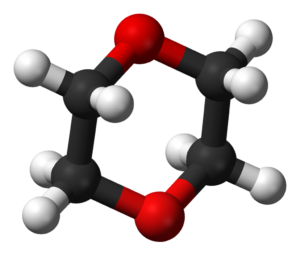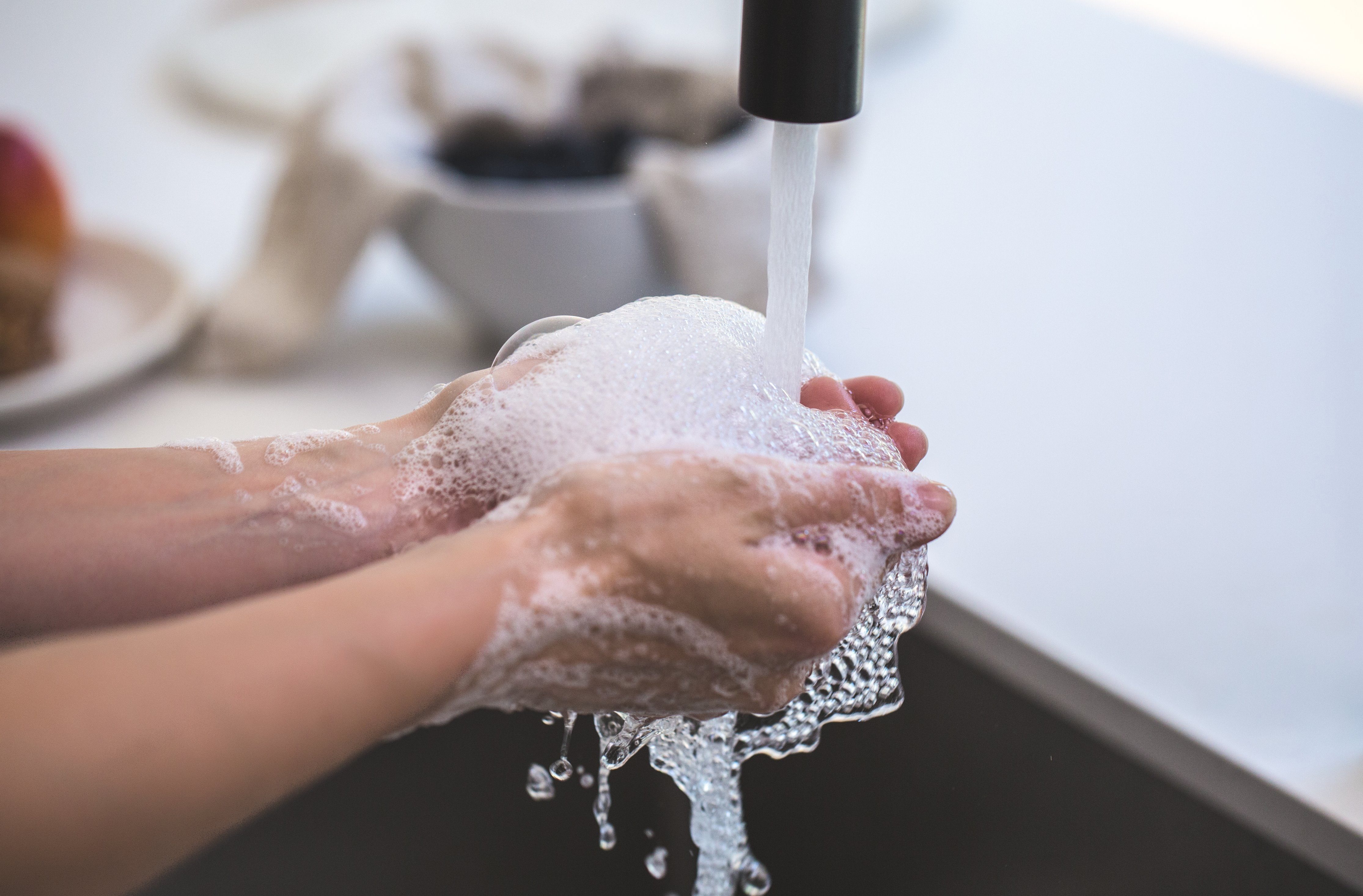The chemical 1,4-dioxane is getting more and more attention lately as a substance of concern in household and personal care products. What is it, where does it come from, and what do companies need to know about it?
What is 1,4-dioxane?

This volatile organic compound has been identified as a possible human carcinogen and has also been associated with harm to the liver and kidneys.
In the past, 1,4-dioxane was commonly used as a stabilizer for the chlorinated solvent 1,1,1-trichloroethane and also had applications in paint strippers, greases, and waxes. While no longer widely used intentionally in commercial applications in the US, it has been found in groundwater at sites throughout the United States, potentially presenting a health risk to people exposed to that groundwater.
Why might 1,4-dioxane be in a cleaning or personal care product?
1,4-dioxane doesn’t actually serve a purpose in cleaning or personal care products, but sometimes it might be present anyway. Why is this? 1,4-dioxane is created as a byproduct during the manufacture of ethoxylated chemicals, such as certain surfactants. When these surfactants are used in cleaning and personal care products, the 1,4-dioxane comes along too. Vacuum stripping can be used to minimize the 1,4-dioxane present in ethoxylated chemicals, but it does not remove all of the contaminant. In some cases, 1,4-dioxane can be present as a low-level contaminant in non-ethoxylated surfactants as well, due to cross-contamination during the manufacturing process. This creates a challenge for product formulators seeking to totally eliminate detectable 1,4-dioxane in their finished products.
FDA has periodically surveyed 1,4-dioxane levels in cosmetics sold in the US. Over time, the average concentration has gone down. In 1981, the average was 50 ppm, but by 2018, only two of the 82 products surveyed had 1,4-dioxane concentrations above 10 ppm. Within the last ten years, average 1,4-dioxane concentrations in personal care and cleaning products have generally been less than 5 ppm, though significantly higher concentrations (up to 35 ppm) have been found in some individual products. The European Commission Scientific Committee on Consumer Safety conducted an independent risk assessment and concluded that 1,4-dioxane levels less than 10 ppm in cosmetic products are safe for consumers. Similarly, in 2017 the International Cooperation on Cosmetics Regulations, a group of regulatory authorities from the US, EU, Japan, Canada, and Brazil, recommended that a target level of 10 ppm or less in cosmetic products be phased in over an appropriate transition period, even though it did not find that current levels of 1,4-dioxane in cosmetics present a public health risk.
Recent Regulatory Developments
As 1,4-dioxane has gotten more attention, some states have started to take regulatory action to either inform end users of its presence in products or restrict residual concentrations in finished products.
- The substance has long been listed as a Prop 65 chemical in California due to its status as a carcinogen, which means that companies will need to evaluate potential exposure to residual 1,4-dioxane in products and compare it to the No Significant Risk Level (NRSL) established for this chemical. If exposure could exceed the NRSL, a Prop 65 warning could be required.
- With the passage of the Cleaning Product Right to Know Act (SB-258) in California in 2017, new requirements will soon be coming into effect that will require disclosure of non-functional constituents in cleaning products, including 1,4-dioxane present at a concentration of 10 ppm or above.
- This summer, the New York State legislature passed a bill that would restrict residual 1,4-dioxane levels in cleaning products to as low as 1 ppm by 2023. However, this bill has not yet been signed into law by the governor as of the date of this post.
- California is also considering further action on 1,4-dioxane under its Safer Consumer Products program, in part due to concerns about its presence in wastewater and interference with potential beneficial reuse of treated wastewater. As of August 2019, the state was seeking input on a potential Alternatives Analysis Threshold of 1 ppm in personal care and household products. If approved, manufacturers of products with 1,4-dioxane concentrations above this threshold would be required to conduct an alternatives analysis, reformulate the product, or remove it from the marketplace.
So what does this mean for product formulators? In short, there’s an increasing need for them to understand the levels of residual 1,4-dioxane that may be present in their products. While CleanGredients-listed ingredients are screened for 1,4-dioxane as part of the third party review process, one of the best ways for formulators to get this information is to communicate directly with ingredient suppliers, who can often provide specific information to help formulators achieve their goals and meet regulatory requirements. Especially in light of the potential new regulatory actions by New York and California, this will be a topic demanding attention from players in all parts of the cleaning product and personal care supply chains.

